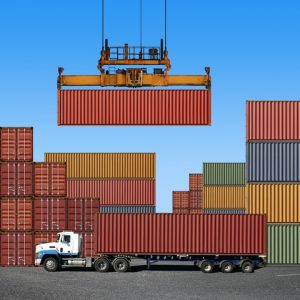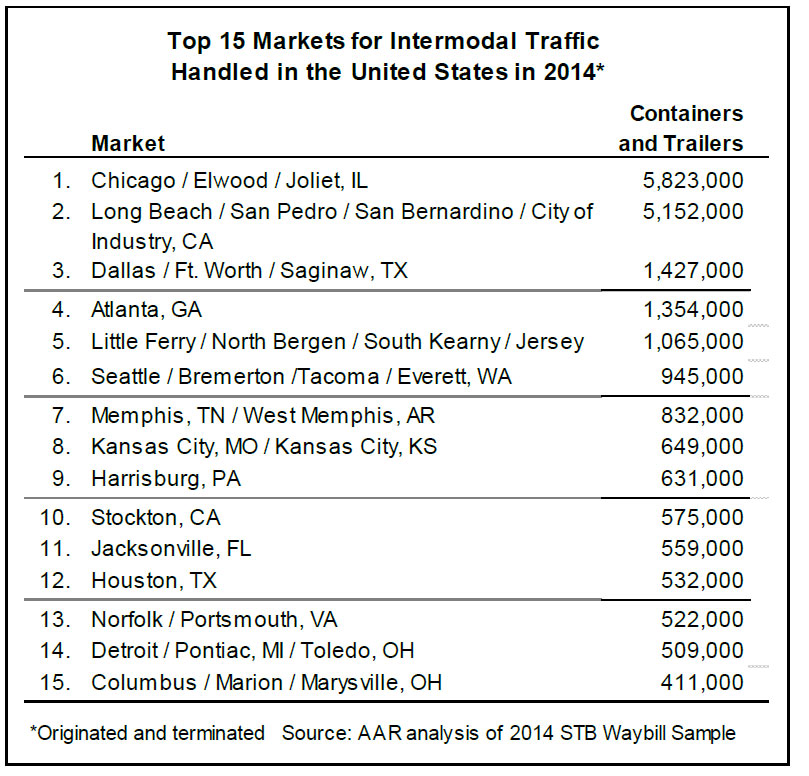 Intermodal shipping involves the movement of loads using multiple transportation modes (i.e., air, sea, road, or rail). Today, intermodal shipping often refers to a road-to-rail-to-road combination service that has enjoyed significant growth in supply chains across North America. The benefits of intermodal shipping include:
Intermodal shipping involves the movement of loads using multiple transportation modes (i.e., air, sea, road, or rail). Today, intermodal shipping often refers to a road-to-rail-to-road combination service that has enjoyed significant growth in supply chains across North America. The benefits of intermodal shipping include:
- A lower cost than standard trucking.
- Increased levels of security.
- Greater sustainability.
In North America, international containers are frequently shipped by intermodal rail in what’s known as “container well cars.” These cars resemble flatcars but the newer ones have a container-sized depression that allow two containers to be loaded – or double-stacked – onto the rail car. The loading and unloading of these container well cars is generally handled by trucks that run between ocean ports, rail terminals, and inland shipping docks completing the intermodal component of the service. The trucking that occurs at origin or destination is often called “drayage,” and is typically provided by dedicate companies or by the railroads themselves.
 According to the Association of American Railroads (AAR), containers accounted for 91% of the 2016 intermodal volume in the United States. The table shown here has the top U.S. metropolitan areas for intermodal volume. Major intermodal markets have large populations and extensive highway networks, both of which are critical elements for intermodal success.
According to the Association of American Railroads (AAR), containers accounted for 91% of the 2016 intermodal volume in the United States. The table shown here has the top U.S. metropolitan areas for intermodal volume. Major intermodal markets have large populations and extensive highway networks, both of which are critical elements for intermodal success.
The popularity of intermodal transportation has been increasing, in part, due to the following trends:
- The evolution of the road transport industry in recent years: marked by the shortage of drivers, increased demand, and reduced capacity of trucks and rising fuel prices.
- A rethinking of the logistic strategies: through the pursuit of cost savings, environmental benefits and better results in terms of road safety.
- A strong focus on supply chain efficiency: lower and more predictable rates, flexibility of loading and unloading of goods, reduction of handling costs, increased speed of access to equipment and standardized transit times.
Intermodal and rail service takes millions of trucks off our highways each year, and its potential to play a much larger role in the future is enormous, both in traditional transcontinental markets and in cross-border trade lanes. If you’re considering adding intermodal to your company’s supply chain, be sure to talk with the intermodal experts at Logistics Plus.

